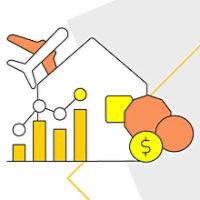“While it’s encouraging to see a rebound in spending this March, particularly across discretionary categories like Recreation and Hospitality, it's premature to call this a turning point, as the overall pace of spending growth remains lower than the final quarter of 2024,” CBA Senior Economist Belinda Allen said.
“We expect interest rate cuts over the coming year to see consumers loosen their purse strings, but global uncertainty from the U.S tariffs may impact this recovery. It’s worth noting Australia is well placed to weather the global economic volatility and remains in a structurally sound position with limited direct impacts from the US tariffs. At the same time, the RBA has room to cut rates if required.”
Over the past 12 months, spending was up 5.6 per cent, with the strongest growth concentrated in essential services where inflation remains elevated and premiums have risen such as Insurance (+15.3 per cent), Education (+12.7 per cent), Health (+11.9 per cent) and Household Services (+9.2 per cent). In contrast, Transport was down 3.3 per cent annually, led by lower petrol prices.
Renters continue to show the weakest spending growth, with the annual rate of spending in original per capita terms rising by 2.0 per cent, well below owners with a mortgage (+3.2 per cent) and those who own their home outright (+3.5 per cent).
“Queensland saw the softest growth rate in March, with spending rising just 0.1 per cent following ex-tropical cyclone Alfred," Ms Allen said.
Spending gains were led by South Australia (+1.2 per cent), Northern Territory (+0.9 per cent).
The CommBank HSI Index tracks month-on-month data at a macro level and is based on de-identified payments data from approximately 7 million CBA customers, comprising roughly 30 per cent of all Australian consumer transactions.


